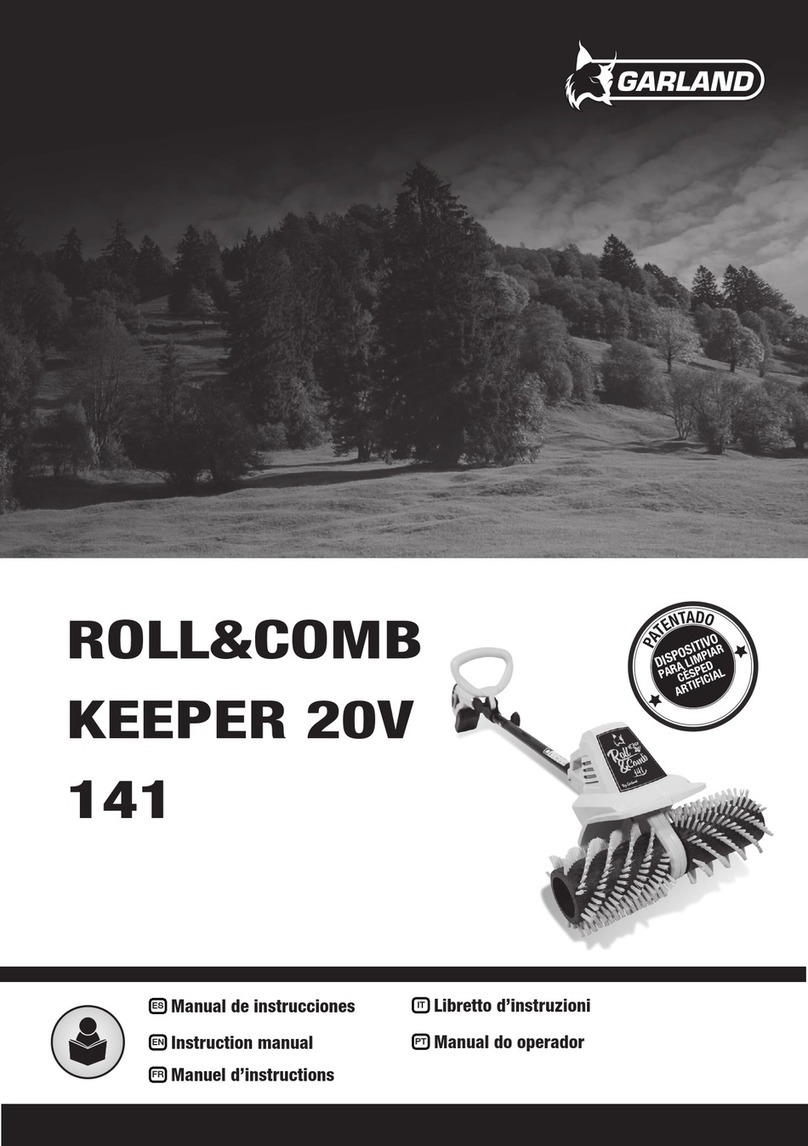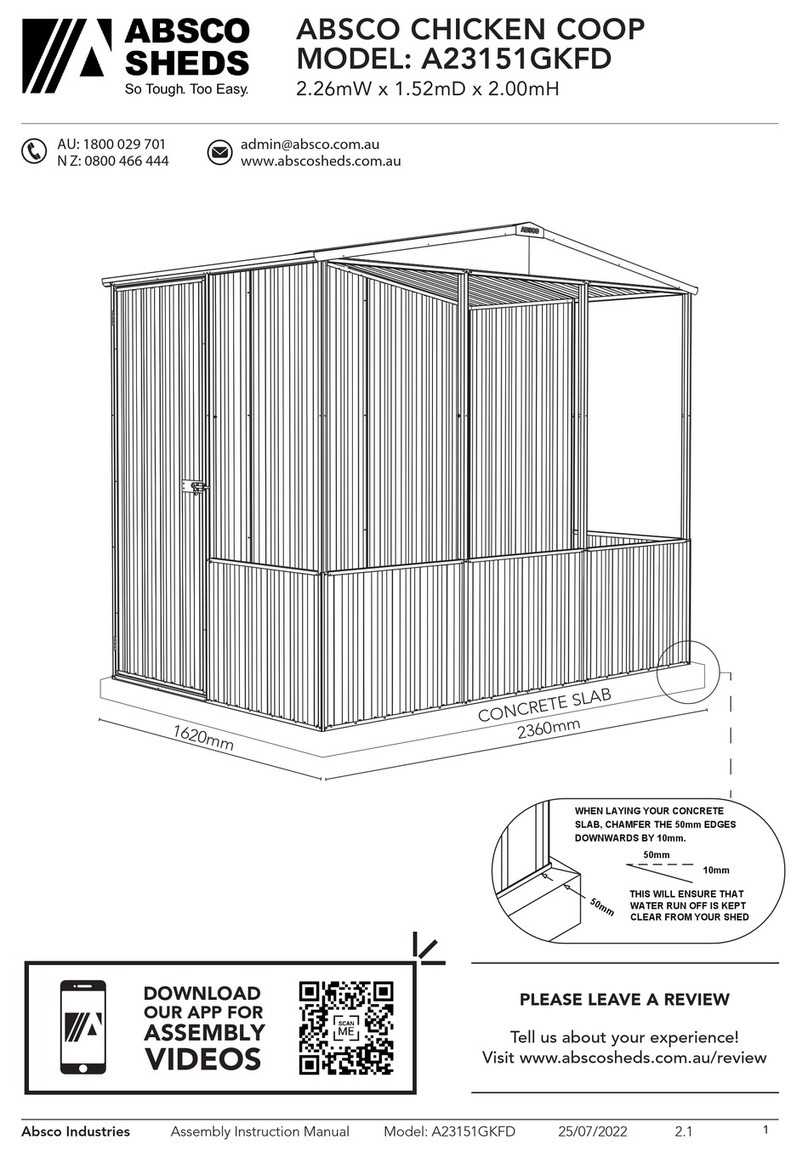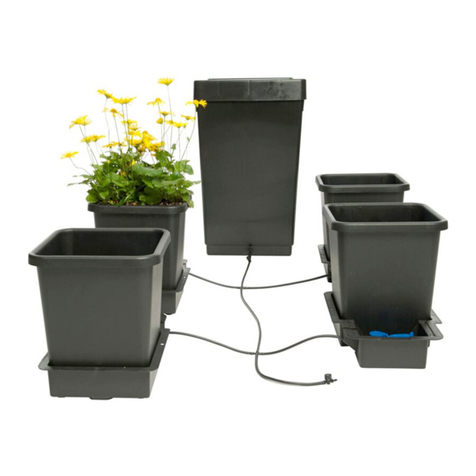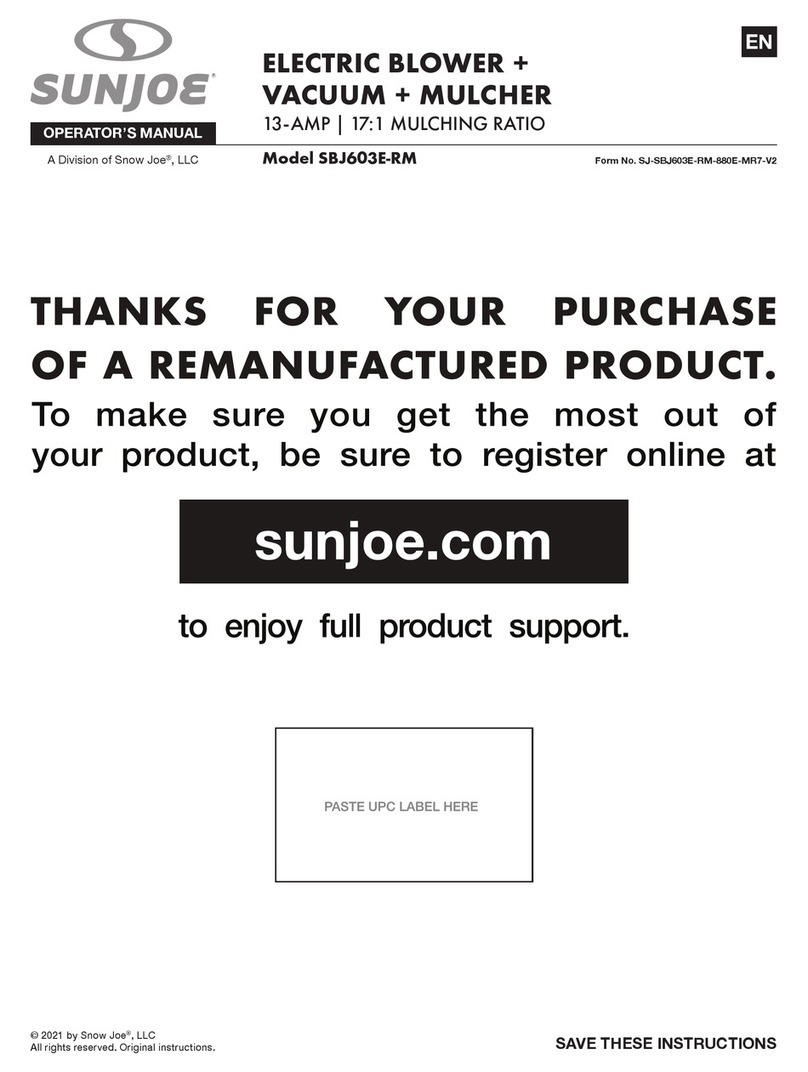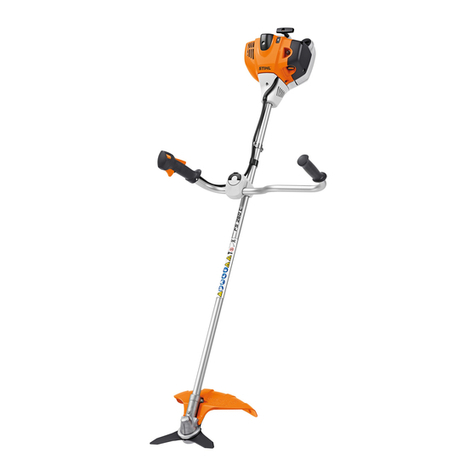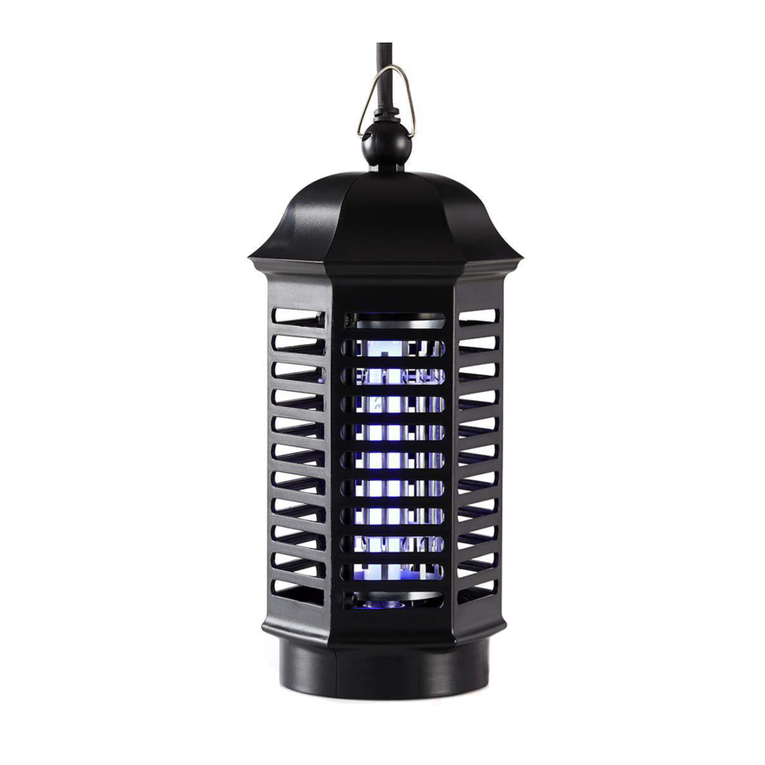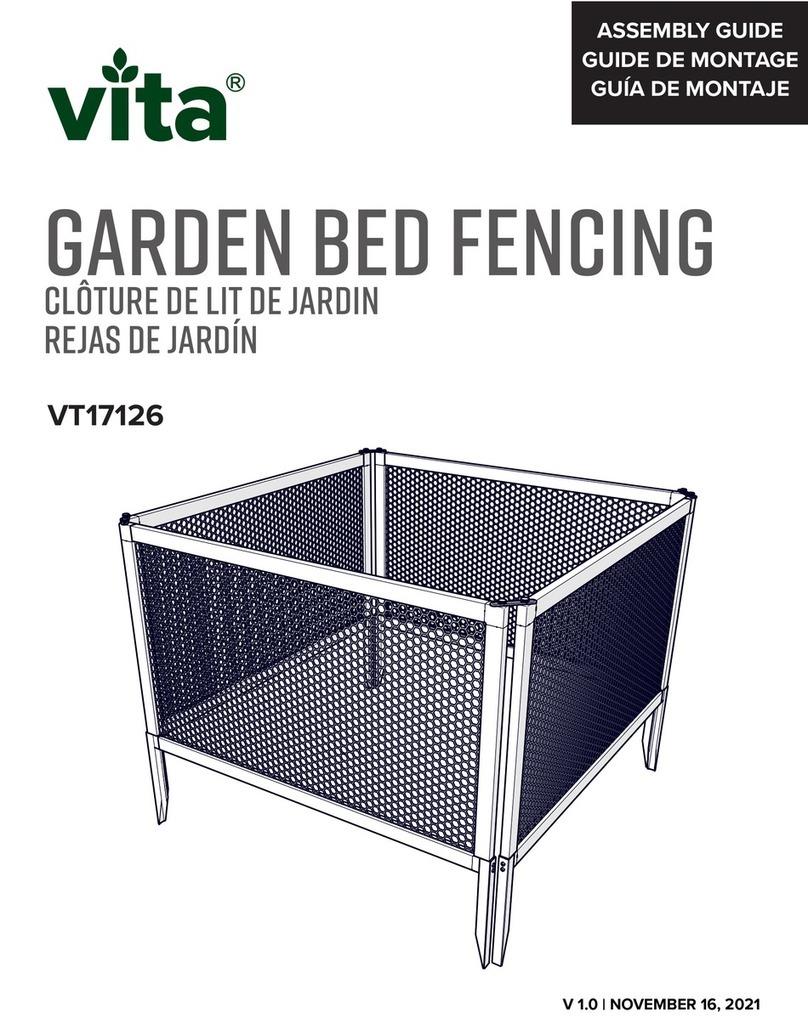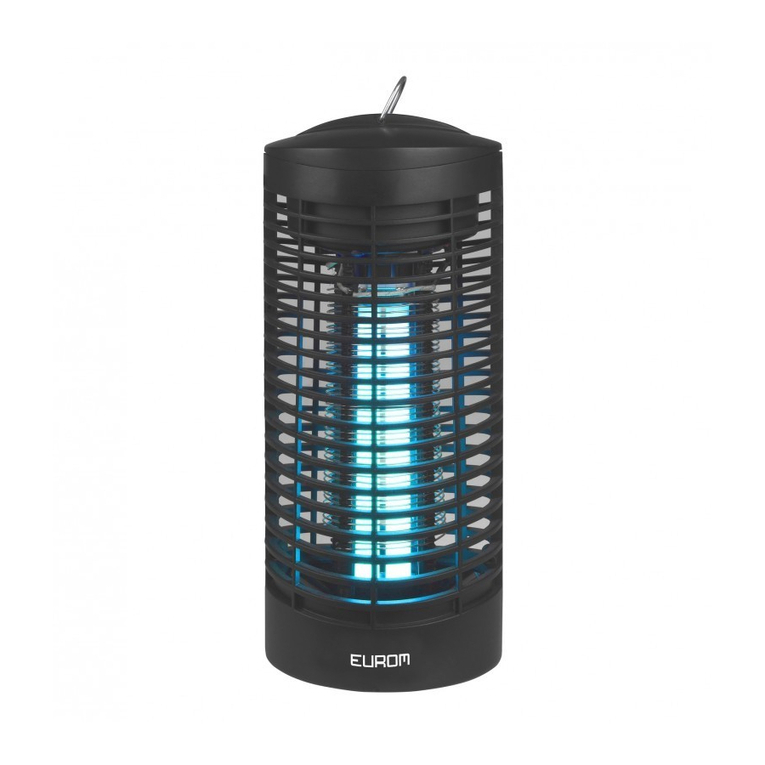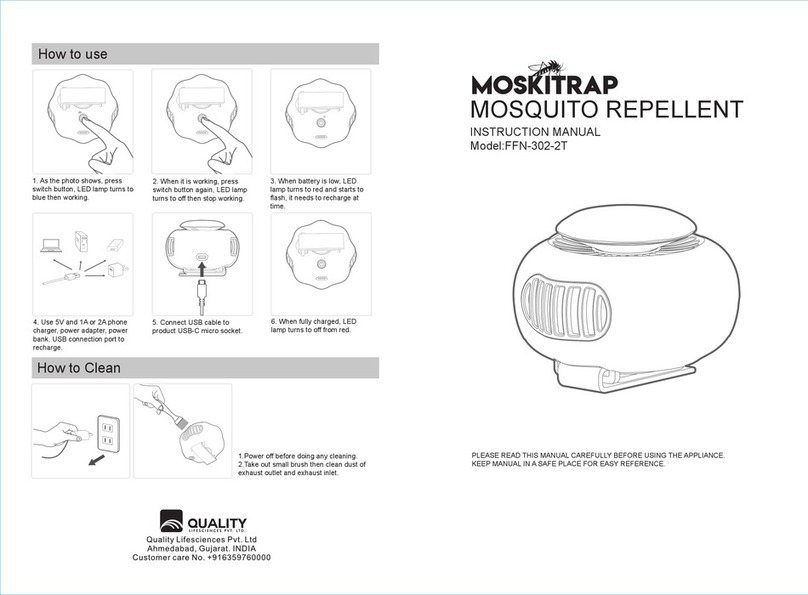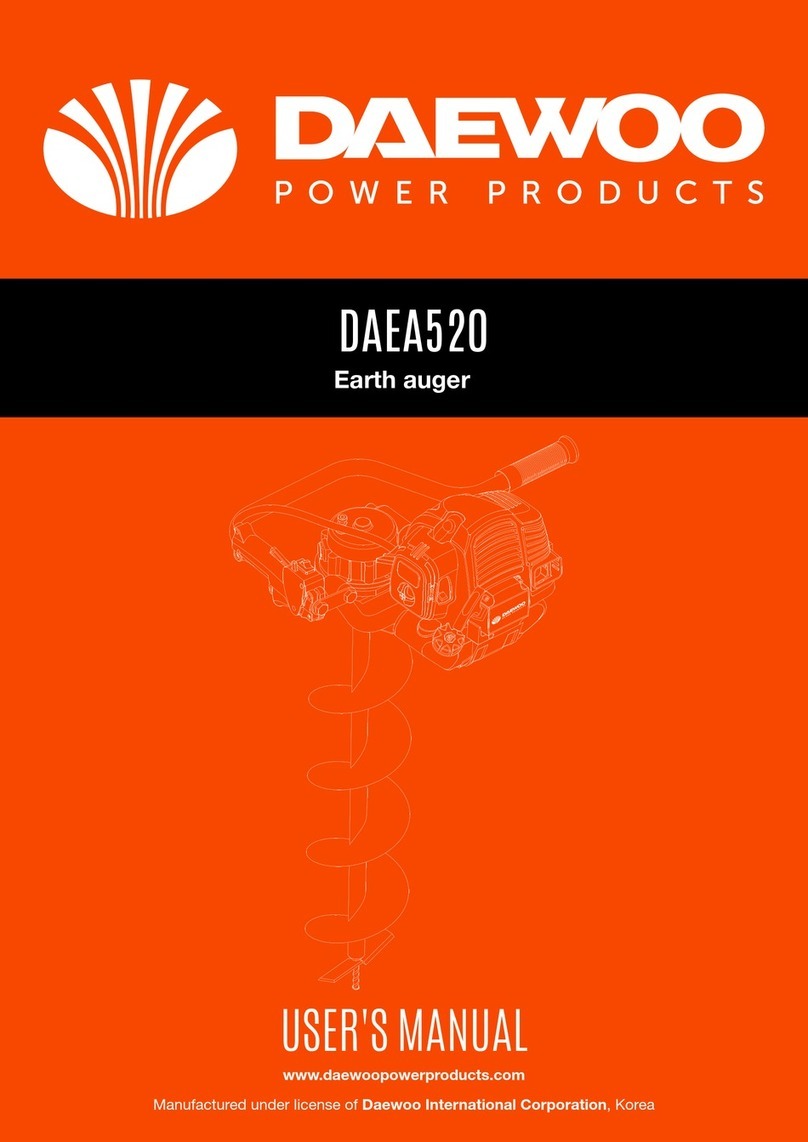DiamaPro Systems SCAR-10 User manual

OWNER’S MANUAL
SCAR-10
10” GAS OR PROPANE SCARIFIER
USER & MAINTENANCE BOOK
SAVE THESE INSTRUCTIONS FOR FUTURE REFERENCE

2
WARRANTY REGISTRATION CARD
Form must be completed and submitted within 30 days from the date of purchase.
Customer Information
First and Last Name
Company Name
Address City State Zip Code
Phone Number Email
Machine Information
Machine Type Machine Model
Serial # Purchase Date (dd/mm/yy)
DiamaPro®Systems
3343 Peachtree Road NE
Suite 145 #24
Atlanta, GA 30326
470-977-2323 nwww.diamaprosystems.com ninfo@diamaprosystems.com

3
Thank you for purchasing a DIAMAPRO®SYSTEMS product. This manual
provides information and procedures to safely operate and maintain the
DiamaPro®SCAR-10. For your own safety and protection from injury,
carefully read, understand, and observe the safety instructions described
in this manual. Keep this manual or a copy of it with the machine. If you
lose this manual or need an additional copy, please contact DiamaPro®
Systems. This machine is designed and built with user safety in mind;
however, it can present hazards if improperly operated and serviced.
Please follow the operating instructions carefully. If there are any questions
regarding operating or servicing of this machine, please contact
DiamaPro®Systems.
Disclaimer: DiamaPro® Systems and its aliates take no responsibility for
any damage, injury or death resulting from the incorrect or unsafe use of this
product. Use of this product should be undertaken by competent persons
only. It is the operator’s responsibility to ensure that the following safety
procedures are followed. If you are unsure, do not operate this product.
Do not disconnect power by pulling cord. To disconnect, grasp the plug,
not the cord.
nSafety Instructions are proceeded by a graphic alert symbol of DANGER,
WARNING, or CAUTION.
INTRODUCTION
SAFETY INSTRUCTIONS
CALIFORNIA PROP 65 WARNING
Thank you for purchasing a DIAMAPRO®SYSTEMS product. This manual
provides information and procedures to safely operate and maintain the
DiamaPro SCAR-10. For your own safety and protection from injury,
carefully read, understand, and observe the safety instructions described
in this manual. Keep this manual or a copy of it with the machine. If you
lose this manual or need an additional copy, please contact DiamaPro®
Systems. This machine is designed and built with user safety in mind;
however, it can present hazards if improperly operated and serviced.
Please follow the operating instructions carefully. If there are any questions
regarding operating or servicing of this machine, please contact
DiamaPro®Systems.
READ & UNDERSTAND THE OPERATOR’S INSTRUCTION MANUAL
THOROUGHLY BEFORE ATTEMPTING TO OPERATE THIS EQUIPMENT.
Death or serious injury could occur if this machine is used improperly.
Indicates an imminent hazard which, if not avoided, will
result in death or serious injury.
Indicates an imminent hazard which, if not avoided, will
result in death or serious injury.
Indicates hazards which, if not avoided, could result in
serious injury and/or damage to the equipment.
GASOLINE/PROPANE POWERED EQUIPMENT
• Gasoline is extremely ammable and poisonous. It should only
be dispensed in well ventilated areas, and with a cool engine.
Warning: Engine exhaust from this product contains chemicals known to
the State of California to cause cancer, birth defects or other reproductive
harm.
Small gasoline engines produce high concentrations of carbon monoxide
(CO) example: a 5HP 4 cycle engine operation in an enclosed 100,000 cu.
ft. area with only one change of air per hour is capable of providing deadly
concentrations of CO in less than fteen minutes. Five changes of air in
the same area will produce noxious fumes in less than 30 minutes.
Gasoline or propane powered equipment should not be used in en-
closed or partially enclosed areas. Symptoms of CO poisoning include,
head- ache, nausea, weakness, dizziness, visual problems and loss of
consciousness. If symptoms occur - get into fresh air and seek medical
attention immediately.
Use of this product can cause exposure to materials known to the
State of California to cause
cancer and/or birth defects or other reproductive harm.
CALIFORNIA PROP 65 WARNING
WARNING
Respirable crystalline silica. May cause cancer.
Causes damage to lungs.
Wear respiratory protection during exposure.
Use appropriate dust control equipment to keep
dust within OSHA and local regulation limits.
!

4
AGENCIES AND REGULATIONS
nNational Fire Protection Agency (NFPA)
To operate a propane-powered oor care machine safely, it is neces-
sary to adhere to specic safety regulations. The NFPA is responsible
for ensuring safe propane use and storage, and their Standard for
Storage and Handling of LP Gas should be consulted for guidance.
Copies of this publication can be obtained by contacting the NPFA in
Quincy, MA at 1-800-334-3555.
One important regulation set forth by the NFPA #58 is that all personnel
who handle propane gas must be properly trained in its safe handling
and operation procedures and carry a certication from their employer or
training supervisor attesting to this fact. While this requirement primarily
applies to individuals who ll and transport liquid propane gas, Diama-
Pro® Systems recommends that operators of propane-powered oor
care machines in public areas also receive proper training and certica-
tion.
Although NFPA 58 8-4.5 permits the use of propane-powered oor care
equipment in buildings frequented by the public, including when they are
occupied, DiamaPro®Systems suggests that these machines be used
when occupancy is minimal.
nCalifornia Air Resource Board (CARB) & Environmental Protection Agency
(EPA)
While CARB and EPA establish limits for propane-powered engines
used outdoors, it is important to note that approval from CARB/EPA
does not indicate that the engine is safe for indoor use.
nCanadian Gas Association (CGA)
A limit of 1500 ppm CO in exhaust ow has been established by the
CGA.
nOccupational Health and Safety Administration (OSHA)
When it comes to propane-powered machines utilized indoors, OSHA
has implemented an 8-hour time-weighted average (TWA) limit of 50
ppm CO in ambient air. OSHA is also contemplating the establishment
of a limit of 800 ppm CO in exhaust ow.
nDepartment of Transportation (DOT)
Regulations have been set forth by the DOT regarding the safety of
fuel cylinders, including those utilized on propane-powered oor care
machines.
nLocal Agencies
Before granting approval for the use of certain equipment, local law
enforcement agencies such as the Fire Marshall may rely on indepen-
dent testing laboratories like UL and CGA. These labs conduct extensive
testing of equipment and only issue their approval after a rigorous eval-
uation process. While not mandatory for all law enforcement agencies,
the stamp of approval from these organizations serves as an additional
assurance for operators that they are working with and around safe
equipment.
PERSONAL PROTECTIVE EQUIPMENT
When operating the machine, it is important to:
nWear safety shoes at all times.
nWear ear protectors to safeguard your hearing.
nEnsure that all personnel in the immediate work area wear safety
glasses with side shields.
nWear safety gloves when changing tools.
nDress appropriately for the work environment.
nUse Carbon Monoxide monitors as an additional precaution.
TESTING:
Numerous tools are available in the market for detecting toxic gases. However,
only the ones specically designed for detecting carbon monoxide resulting
from combustion engines are deemed suitable for testing exhaust emissions
from oor machines powered by propane. Certain instruments are meant for
detecting “ambient air” and may get damaged if utilized for taking readings in
the muer or tailpipe. Hence, it is crucial to select the appropriate instrument to
fulll the testing requirements. In general, instruments that can detect readings
in ppm (parts per million) ranging from 0 to 1000 are sucient for examining
ambient air, i.e., the air in the breathing zone of the operator. On the other hand,
devices capable of testing carbon monoxide in the exhaust should be certied
by the manufacturer for that purpose and should be able to read from 0 to at
least 2000 ppm.
Several instruments and systems for these purposes include:
1. AMBIENT AIR MONITORING
nDRAGER Model 190 manufactured by National Drager
nSENSIDYNE gas sampling system with YB-11038 Sensidyne detector tubes
nDRAGER gas sampling system with YB-4620 Drager detective tubes
nGAS-TECH Model CO-95
nENERAC POCKET 60 manufactured by Energy Eciency System
2. ENGINE EXHAUST ANALYZERS
nHORIBA GAS ANALYZER
nENERAC 2000 COMBUSTION ANALYZER
nENERAC POCKET 60
3. DATA LOGGERS
nINDUSTRIAL SCIENTIFIC CORP. MODEL STX-70 CO MONITOR, Data-Logger
nBIOSYSTEMS INC. “TEXILOG” Data-Logger
All instruments used for testing must be calibrated at the intervals recommended
by the manufacturer. The test results must include the monitor’s model number and
date of calibration.
DUST WARNING
Cutting, especially when DRY cutting, generates dust that comes
from the material being cut, which frequently contains silica. When
dry cutting, be sure to use a HEPA ltered dust collector.
Silica is a basic component of sand, quartz, brick clay, granite and
numerous other minerals and rocks. Exposure to excessive amount of
such dust can cause:
n Respiratory diseases (aecting your ability to breath), including chron-
ic bronchitis, silicosis and pulmonary brosis from exposure to silica.
These diseases may be fatal;
nSkin irritation and rash; and
nCancer according to NTP* and IARC*
*National Toxicology Program, International Agency for Research on Cancer
Take precautionary steps
nAvoid inhalation of and skin contact with dust, mist and fumes;
nWet cut when feasible, to minimize dust;
nWear and ensure that all bystanders wear appropriate respiratory
protection such as dust masks designed to lter out microscopic
particles. (See OSHA 29 CFR Part 1910.1200)
CARBON MONOXIDE WARNING
OPERATING ENVIRONMENT
The DiamaPro SCAR-10 can be operated outdoors within the tempera-
ture range of 41°F to 86°F (5°C to 30°C). It’s crucial to avoid using the
machine during rainy or snowy weather conditions. When using the ma-
chine indoors, make sure to work in areas that are adequately ventilated.
PROTECTION DEVICES
The machine is equipped with multiple safety mechanisms. These con-
trivances safeguard the operator and any other individuals from potential
harm. It is imperative not to remove them. Instead, prior to utilizing the
machinery, ensure that all safety devices are appropriately installed and
operational.
USAGE SAFETY
The DiamPro Systems SCAR-10 is intended to minimize all associated
hazards related to its operation. Nonetheless, it is not entirely feasible to
eliminate the possibility of accidents with the machine. Inexperienced or
untrained operators may cause residual risks associated with:
nPositional hazards due to improper operator posture
nEntanglement hazards arising from the use of unsuitable work attire
n Training hazards caused by insucient operational training
SAFETY MEASURES FOR PROPANE
Propane is a ammable gas with vapors that are denser than air. Similar to
gasoline, improper handling of propane can lead to explosions. To aid in de-
tecting leaks, propane is mixed with an odorant that has a distinctive smell,
detectable at low concentrations. When working with propane, it is essential
to be aware and take necessary safety precautions. As long as these mea-
sures are observed, the risk is minimal. However, lack of awareness could
result in needless hazards. The two most signicant dangers associated
with propane-powered oor care machines are:
nCarbon Monoxide Poisoning:
Carbon monoxide poisoning is the most commonly reported incident
associated with propane-powered oor care machines, caused by exces-
sive exhaust emissions. The symptoms include headaches, dizziness,
and nausea. Engines with inadequate preventive maintenance practic-
es, particularly those with unclean air lters and machines operated in
enclosed spaces without sucient ventilation, are a signicant cause.
The use of substandard, inexpensive machines without emissions control
technology and improperly adjusted carburetion could also contribute to
the problem.
n Overlled Fuel Cylinders:
Almost all re-related incidents reported occur when a cylinder is
brought into a building without rst checking for overll. This practice
is hazardous, imprudent, and avoidable.
SAFETY AGAINST FIRE
Be mindful of the potential risks of re or explosion when working with
propane and take standard re-safety measures.
nFire:
There is a likelihood of re resulting from leakage or venting of LPG
vapor from fuel cylinders or carburetion equipment.
nExplosion:
Concentration or connement of LPG vapor in a restricted or small
space may cause ignition or explosion.
Propane may also experience a BLEVE: Boiling Liquid Expanding Vapor Explosion.
EMISSIONS
All propane-powered oor care machines generate emissions. While
most are innocuous, some can be hazardous, even fatal. Carbon
monoxide (CO) presents the most signicant danger since exposure to
CO at a concentration of 3,000 parts per million (ppm) for as little as 30
minutes can be lethal. Carbon monoxide is a colorless, odorless, and
invisible gas formed when fossil fuels, including propane, gasoline,
wood, coal, oil, and methane, burn incompletely.

5
Horsepower 14 HP
Working Width 10 Inch
Working Depth 0- 5/16 Inch
Fuel Propane
Gas / PropaneWeight 353 lbs / 370 lbs
Drum Rotation Down Cut
Depth Control Adjustable
Machine Size (L x H x W) 47 X 21 X 37 Inch
SPECIFICATIONS
OPERATION INSTRUCTIONS
IMPORTANT!
Read the engine manufacturer’s manual, familiarize yourself with engine
start procedures.
BEFORE STARTING THE ENGINE:
Be sure that the cutter drum assembly has been properly installed and the
cutter drum shaft is in place and secured.
1. Select a level place at the job site. Set the “Handle Wheel” in the full
counter-clockwise or UP position.
It is most important to determine the position of the cutter wheels as
they relate to the slab or oor surface. If the drum assembly is lled
with cutters, the cutter wheels will most likely contact the slab when the
“Handle Wheel” turned clockwise or down.
Pull the “Engagement Handle” towards the operator to ensure the cut-
ting drum will not contact the slab when attempting to start the machine.
Always raise the Engagement Handle before starting the machine to
prevent accidental damage to the machine and the slab.
2. Turn the “Handle Wheel” to the full counter-clockwise position and raise
the machine. DO NOT force the handle wheel. If resistance is felt, turn
the “Handle Wheel” clockwise one or two turns. This will allow the
“Handle Wheel” to reach its normal full UP position.
3. Check level of oil in engine crankcase (engines are usually shipped dry,
oil must be added as per engine manufacturers instructions).
4. Check fuel level (follow engine manufacturers instructions).
5. Be sure all guards (belt, motor, cutter wheel) are in place and secure.
6. Be sure the emergency stop switch is fully seated and attach the end of
the cord to a secure piece of clothing before operation
7. Raise the throttle about half way and turn the ignition key clockwise to
start the machine.
8. If utilizing the pull starter, determine the starter rope pulls easily, and the
rope retracts properly.
BEFORE STARTING THE MACHINE
nPerform a visual inspection of the entire machine and all daily
maintenance according to the Maintenance Schedule.
nLocate and be familiar with all engine/motor and operating controls.
nFor Gasoline models, obtain the Engine Manufacturer’s Owner’s
Manual. Read it and understand it before continuing. Follow the engine
manual for break-in instructions.
nUse the correct cutters for the job. Be sure cutter drum is balanced, the
number, size and type of cutter wheels are correct and the cutter drum
shaft is locked and secured.
nBe sure all fasteners are tight and secure, check for signs of metal
cracking or fatigue, inspect for damage to electrical wiring, damage to
fuel lines, check bearings, etc.
nBe sure all guards are in place. Do not operate unless cutter drum guard
is in place and secure.
nInspect work area to determine the presence and location of deck
inserts, pipes, columns and objects protruding from the slab surface so
that they may be avoided during operation.
nConsult the Engine Manufacturer’s Owner’s Manual and follow the
directions for starting the engine and allow the engine to warm up.
nTo start this propane powered equipment, open the main fuel valve
located on the propane tank. Open the throttle wide open and start the
engine.
NOTE: Always turn o the main fuel valve on the propane tank when
equipment is not being used.
STARTING THE ENGINE/MOTOR
DO NOT OPERATE GASOLINE/PROPANE POWERED EQUIPMENT
WITHOUT ADEQUATE VENTILATION.
CARBON MONOXIDE IS AN INVISIBLE, ODORLESS GAS THAT CAN KILL.
NEVER CHECK FOR PROPANE LEAKS USING AN OPEN FLAME. INSTEAD, USE
A LEAK-TESTING SOLUTION. NEVER ALLOW PROPANE FUMES TO ESCAPE IN A
CLOSED AREA; PROPANE IS HEAVIER THAN AIR AND WILL“SETTLE.”
ALWAYS BE SURE TO UTILIZE THE SAFETY STOP SWITCH AND FASTEN
THE STOP SWITCH LEAD TO A SECURE PIECE OF CLOTHING.
GENERAL INSTRUCTIONS
nPersonal Protection Equipment and proper safety attire must be worn
when operating this machine. The operator must wear approved safety
equipment appropriate for the job such as hard hat and safety shoes
when conditions require. Hearing protection MUST be used (operational
noise levels of this equipment may exceed 90db). Eye protection MUST
be worn at all times.
Keep body parts and loose clothing away from moving parts.
Failure to do so could result in dismemberment or death.
nDo not modify the machine.
nStop motor/engine when adjusting or servicing this equipment. Maintain
a safe operating distance from ammable materials. Sparks from the
cutting-action of this machine can ignite ammable materials or vapors.
nEquipment should only be operated by trained personnel in good
physical condition and mental health (not fatigued). The operator and
maintenance personnel must be physically able to handle the bulk weight
and power of this equipment.
nThis is a one person tool. Maintain a safe operating distance to other
personnel. It is the operators’ responsibility to keep other people
(workers, pedestrians, bystanders, etc.) away during operation. Block
o the work area in all directions with roping, safety netting, etc. for a
safe distance. Failure to do so may result in others being injured by ying
debris or exposing them to harmful dust and noise.
nThis equipment is intended for commercial or industrial use only.
nFor the operator’s safety and the safety of others, always keep all guards
in place during operation.
nNever let equipment run unattended.

6
STARTING THE CUT
nSlowly lower the cutter head to the slab surface with the engagement
handle
nWhen cutting, be sure to engage the handle wheel lock. This will ensure
the depth of cut does not change due to vibrations.
nRotate the Depth Control down until you hear the cutters contact the
slab. Once contact is made lower the machine an additional 1/8” for
the initial pass. Additional passes can be made in 1/8” increments to a
maximum depth of 3/8”.
Cutting more than 1/8 per pass could result in damage to the drum and
machine.
nUse an Industrial Vacuum Dust Control System for dry planing
operations.
nMove engagement handle toward the operator to raise cutter head
assembly above slab surface.
nFor gasoline and propane models, close throttle and turn the ignition
switch to the “OFF” position.
nAt the end of the day, clean the entire machine after it has cooled. Check
for worn or damaged cutters and perform any required maintenance.
nDrum assembly revolves at approximately 1200-1800 R. P. M.; Push
Model Scarier/Planer is a down-cut planer, Depth of cut is completely
determined by the material to be cut, horsepower of the engine/motor
and spacing of the cutter wheels on the cutter head.
nAll cuts should be started from a stationary position - when the cutting
depth is reached the planer should then move forward.
nThe engine/motor should not labor. Run at full speed and adjust forward
speed to t the work being performed. Very hard concrete will have to
be cut at a slower pace than asphalt or deteriorated surfaces.
nIf it is necessary to make deep cuts - make several shallow cuts to
achieve the desired depth. If the cutting depth is set too deep the cutter
wheels will not be able to absorb the shock and damage to the
equipment will result.
nThe cutter wheels have an oversized arbor hole. This “play” is needed to
absorb some of the shock of the cutter contacting the concrete.
nCutting speed is directly proportional to the amount of material to be
removed in one pass; an example - cutters spaced on 1” centers will
penetrate to a greater depth than those spaced at 1/2” centers, and the
planer will move forward faster. Most of the material in the path of the
cutting head will be removed either by the cutters them selves or
through the natural hammering action and spalling of the material being
cut. A later pass with cutters spaced closer together will remove the
ridges.
nIt is best to make several passes - increments of 1/32-1/8” or even less if
surface is extremely hard.
nUse coarse (wide spacing) for initial passes. Complete job with medium
spacing. Never use a ne spaced cutter head to cut deeper than
1/32-1/8”.
nSome concrete slabs, especially if they are covered with water a good
deal of time or if they have been treated with hardeners, develop an
extremely high surface strength.
Material removal depth should not exceed 1/32-1/8” per pass thus
requiring several passes to reach the desired depth of cut.
nThis surface can be easier to penetrate than concrete. In some
instances depths of 1/4” per pass can be achieved with the larger ma-
chines. In general though, 1/8” per pass is still standard and should be
maintained until the hardness of the asphalt is determined.
Note: Specic information on asphalt cutting is available upon request.
TO STOP CUTTING
AFTER CUTTING
CUTTING HEADS / DRUMS
TO REACH MAXIMUM DEPTH IN CONCRETE
TO CUT ASPHALT
FINE CUTTING
MAINTENANCE
Refer to the Engine/Motor Manufacturer’s Owner’s Manual for
maintenance information specic to the engine/motor used.
IMPORTANT!
nCheck oil level before operation. Change engine oil and lter according
to engine manufacturers recommendations.
nClean air lter element daily.
On new equipment, and after replacing a set of belts, they should be
re-tensioned after the rst four hours of use.
n New belts will be sti and will loosen with use. Proper belt tension must
be maintained to transmit the engine/motor power to the cutting drum.
Slipping belts will overheat, belt life will be shortened and the cutting
speed limited.
Over tensioned belts will shorten belt and bearing life.
nDamaged, stretched or excessively worn belts should be replaced with
a complete set. DO NOT mix new and used belts, doing so will only
shorten the life of new belt(s) and limit power transfer from the engine/
motor to the cutting drum. This will have a denite impact on machine
eciency and
production rate.
nTo tension belts, loosen motor mounting hardware slightly. Use the
jacking bolt to adjust the engine/motor until the belts are tight. Re-
torque the engine/motor mounting hardware.
n-Grease cutter assembly with one pump of a lithium complex grease
(XHP222 or equivalent) after every 4 hours of use.
Never work on or under equipment without rst securing the equipment to
prevent it from moving or falling. Always work on a at and level surface.
BELTS
CUTTER ASSEMBLY BEARINGS
OPERATION INSTRUCTIONS (cont).
nThis assembly should be used for very shallow or cleaning operations.
Check with DiamaPro®Systems or an authorized dealer for special
cutter wheels for removal of paint build-up or similar surface coatings.

7
BLADES & DRUM REMOVAL/REPLACEMENT
CUTTING DRUM ASSEMBLY
(A)
Pull the Cutting Disc Shafts out the
open side of the Cutting Drum as
shown.
(B)
Assemble the Cutting Drum using
Cutting Discs and Disc Spacers
(See Cutting Drum Conguration).
(C)
Continue Step B until the Cutting
Drum assembly is complete.
(D)
Place the Cutting Drum on
the closed end, with the
open end facing upward.
(E)
Obtain the Retaining Ring and
Flat Washer Spacers.
(F)
Install the 6 Flat Washer
Spacers (if used) over the 6
Retaining Ring, Retaining
Screw holes.
NOTE: The Cutting Drum may be disassembled from either end.

8
BLADES & DRUM REMOVAL/REPLACEMENT (cont.)
CUTTING DRUM INSTALLATION
1. Be sure the machine is turned o with the battery disconnected with the key switch in the o position. Remove the safety switch tether for added protection.
nEngage the parking brake to ensure the machine does not move during this operation.
2. On the right side of the machine, opposite from the belted side, remove the bottom 2 socket head bolts from the bearing plate using an M10 Allen set.
3. Remove the top 2 bolts using an M18 Wrench.

9
BLADES & DRUM REMOVAL/REPLACEMENT (cont.)
4. To remove the plate from the machine, thread the 2 socket head bolts into the threaded holes on the left and right of the bearing plate.
Be sure not to cross-thread these holes.
n Gently tighten the bolts one after another, a few turns at a time, to press the plate o of the shaft.
5. Slide the drum o of the shaft carefully, so as not to damage the shaft.
6. Set up your drum prole as desired.
7. Slide the new drum back onto the shaft. Be sure that the drum is fully seated onto the driving plate, and the spacer (A) is fully seated against the drum.
8. Using the guide pins (A), reattach the bearing plate to the machine using the bolts previously removed. Be sure the bearing is seated onto the shaft. It may be helpful to
lower the machine so that the drum is touching the ground taking the load o the shaft allowing easier alignment of the holes.
A
A

10
SCAR-10 PROPANE/GAS MAINTENANCE SCHEDULE
Inspect belts and belt tensions
Warning stickers
Inspect cutting drum
Inspect machine for damage
Clean machine
Check bolt tightness on the machine
Unplug battery from machine after use
Check propane lines for wear
Grease bearings
Check engine oil
Check air lter*
Change engine oil
Replace air lter
Check engine wiring for wear/damage
Check throttle cable
every 10 working hours
every 50 hours
every 100 hours
MAINTENANCE TASK ALTERNATE WEEKLYDAILY
x
x
x
x
x
x
x
x
x
x
x
x
x
x
x
*NOTE: Air lter may need to be checked and replaced sooner if exposed to extremely dusty environments

11
SCARIFIER ACCESSORIES APPLICATION GUIDE KEY
Preferred method to produce maximum performance or productivity rates for most job applications
Acceptable performance or productivity rate for most job applications
Limited performance productivity rates for most job applications
Applications
← LIGHT REMOVAL HEAVY SCALING →
PREPARATION GUIDE
Removal of paints &
coatings from tanks &
deck areas
Removal of non-slip
paints, epoxies, mastics &
rubberized coatings from
steel tanks & deck areas
Removal of heavy rust &
scale build up in tanks &
deck areas
Removal of paint, dirt
build up & ice deposits
from concrete oors
Roughing keying
texturing concrete.
Removal of laitance
excess concrete or
asphalt
Removal of thermoplastic
road, runway markings
Sidewalk trip hazard
repair
Concrete grooving
applications for non-slip
surfaces

12
DP-SCAR-10 MAIN ASSEMBLY

13
DP-SCAR-10 MAIN ASSEMBLY
ITEM # DESCRIPTION PART # QTY
1Handrail Bracket Assembly for DiamaPro 10" Scarier DP-SCAR10-HRBA 1
2Outer Hexagonal Locknut for DiamaPro 10" Scarier DP-SCAR10-LM10 4
3Washer for DiamaPro 10" Scarier DP-SCAR-SW10 15
4Cushion Block for DiamaPro 10" Scarier DP-SCAR10-CBL 1
5Outer Hexagonal Bolt for DiamaPro 10" Scarier DP-OHB-M10X40 2
6Flat Washer for DiamaPro 10" Scarier DP-FLAT-10 4
7Inner Hexagonal Bolt for DiamaPro 10" Scarier DP-IHB-M5X40 2
8Rotary Mandrel for DiamaPro 10" Scarier DP-SCAR10-ROMD 1
9Grease Nipple for DiamaPro 10" Scarier DP-SCAR10-GN10 1
10 Handle Screw Assembly for DiamaPro 10" Scarier DP-SCAR10-HDSA 1
11 Armrest for DiamaPro 10" Scarier DP-SCAR10-ARMR 1
12 Outer Hexagonal Bolt for DiamaPro 10" Scarier DP-OHB-M10X20 4
13 Armrest Cushion for DiamaPro 10" Scarier DP-SCAR10-ARMSC 2
14 Outer Hexagonal Bolt for DiamaPro 10" Scarier DP-OHB-M8X20 4
15 Washer for DiamaPro 10" Scarier DP-SCAR10-WS8 4
16 Large Washer for DiamaPro 10" Scarier DP-SCAR10-LGWS8 4
17 Propane Tank Holder Assembly for DiamaPro 10" Scarier
(Propane Units Only)
DP-SCAR10-GTHA 1
18 Rear Wheel Frame Assembly for DiamaPro 10" Scarier DP-SCAR10-RWFA 1
19 Outer Hexagonal Bolt for DiamaPro 10" Scarier DP-OHB-M10X30 2
20 Outer Hexagonal Bolt for DiamaPro 10" Scarier DP-OHB-M10X25 8
21 Small Chassis Swing Pin Shaft for DiamaPro 10" Scarier DP-SCAR10-SCPS 2
22 Flat Washer for DiamaPro 10" Scarier DP-SCAR10-WS20 2
23 Cotter Pin for DiamaPro 10" Scarier DP-SCAR10-CP2.5 2
24 Shaft Pulley for DiamaPro 10" Scarier DP-SCAR10-DRPL 1
25 Large Washer for DiamaPro 10" Scarier DP-SCAR10-LGWS10 1
26 Outer Hexagonal Bolt for DiamaPro 10" Scarier DP-OHB-M10X125X30 1
27 Belt Cover for DiamaPro 10" Scarier DP-SCAR10-BTCV 1
28 SS Cap Nut for DiamaPro 10" Scarier DP-CNUT-M10 2
29 Flat Washer for DiamaPro 10" Scarier DP-FLAT-16 2
30 SS Cap Nut for DiamaPro 10" Scarier DP-CNUT-M16 2
31 Rubber Wheel for DiamaPro 10" Scarier DP-SCAR10-RWHL 2
32 Locker Cover for DiamaPro 10" Scarier DP-SCAR10-LCVR 2
33 Main Box for DiamaPro 10" Scarier DP-SCAR10-MNBX 1
34 Front Wheel Shaft for DiamaPro 10" Scarier DP-SCAR10-FWSH 1
35 Locating Pin for DiamaPro 10" Scarier DP-SCAR10-LP12 2
36 Inner Hexagonal Bolt for DiamaPro 10" Scarier DP-IHB-M10X25 12
37 Spring Washer for DiamaPro 10" Scarier DP-SCAR10-SW101 12
38 Plate for DiamaPro 10" Scarier DP-SCAR10-PLATE 1
39 Drum Assembly for DiamaPro 10" Scarier DP-SCAR10-DRUM 1
40 Outer Hexagonal Bolt for DiamaPro 10" Scarier DP-OHB-M10X55 1
NP Engine for DiamaPro 10" Scarier DP-SCAR10-14HP 1
NP Deector Muer for DiamaPro 10" Scarier DP-SCAR10-7816 1
NP Air lter for DiamaPro 10" Scarier DP-SCAR10-AIRF 1

14
TANK BRACKET ASSEMBLY (Propane Units Only)
ITEM # DESCRIPTION PART # QTY
1Outer Hexagonal Nut for DiamaPro 10" Scarier DP-NUT-M6 4
2Spring Washer for DiamaPro 10" Scarier DP-SCAR10-SW6 4
3Clasp for DiamaPro 10" Scarier DP-SCAR10-CLSP 1
4Propane Tank Holder for DiamaPro 10" Scarier DP-SCAR10-GTH 1
5Hoop Pin Shaft for DiamaPro 10" Scarier DP-SCAR10-HPS 1
6Cotter Pin for DiamaPro 10" Scarier DP-SCAR10-CP2X25 1
7Steel Cylinder Vapor 20lb with Fill, All In One VAPOR-TANK-STEEL-20#-B 1
8Gas Tank Hoop for DiamaPro 10" Scarier DP-SCAR10-GTL 1

15
HANDLE SCREW ASSEMBLY

16
HANDLE SCREW ASSEMBLY
ITEM # DESCRIPTION PART # QTY
1Grease Nipple for DiamaPro 10" Scarier DP-SCAR10-GN10 1
2C-Clip for DiamaPro 10" Scarier DP-SCAR10-CIRC25 2
3Flat Washer for DiamaPro 10" Scarier DP-FLAT-25 2
4Copper Sleeve for DiamaPro 10" Scarier DP-SCAR10-OFCS 2
5Knob for DiamaPro 10" Scarier DP-SCAR10-KNOB 1
6Adjustable Screw for DiamaPro 10" Scarier DP-SCAR10-ADSC 1
7C-Clip for DiamaPro 10" Scarier DP-SCAR10-CIRC52 1
8Deep Groove Ball Bearing for DiamaPro 10" Scarier DP-SCAR10-BB7205 1
9Countersunk Bolt for DiamaPro 10" Scarier DP-CIHB-M5X12 2
10 Rotary Mandrel for DiamaPro 10" Scarier DP-SCAR10-ROTM 1
11 Hex Head Bolt for DiamaPro 10" Scarier DP-OHB-M8X30 1
12 Flat Washer for DiamaPro 10" Scarier DP-FLAT-8 2
13 Bearing Pedestal for DiamaPro 10" Scarier DP-SCAR10-BPW 1
14 Lock Block for DiamaPro 10" Scarier DP-SCAR10-LKBK 1
15 Locknut for DiamaPro 10" Scarier DP-SCAR10-LM8 1
16 Socket Head Set Screw for DiamaPro 10" Scarier DP-SCAR10-SSM8X12 1
17 Positioning Disk for DiamaPro 10" Scarier DP-SCAR10-PODI 1
18 Handle Wheel for DiamaPro 10" Scarier DP-SCAR10-HWHL 1
19 Flat Key for DiamaPro 10" Scarier DP-SCAR10-KEY6X20 1
20 Large Washer for DiamaPro 10" Scarier DP-SCAR10-LWS6 1
21 Spring Washer for DiamaPro 10" Scarier DP-SCAR10-SW6 1
22 Hex Head Bolt for DiamaPro 10" Scarier DP-OHB-M6X16 1
23 Ball Joint for DiamaPro 10" Scarier DP-SCAR10-BM16X50 1

17
REAR WHEEL FRAME ASSEMBLY
ITEM # DESCRIPTION PART # QTY
1Outer Hexagonal Bolt for DiamaPro 10" Scarier DP-OHB-M8X16 2
2Spring Washer for DiamaPro 10" Scarier DP-SCAR10-SW8 2
3Large Washer for DiamaPro 10" Scarier DP-SCAR10-LGWS8-1 2
4Rubber Wheel for DiamaPro 10" Scarier DP-SCAR10-RWHL 2
5Rear Wheel Frame for DiamaPro 10" Scarier DP-SCAR10-RWF 1
6Lifting Rod Pin for DiamaPro 10" Scarier DP-SCAR10-LRP 1
7Lifting Rod Pin Shaft for DiamaPro 10" Scarier DP-SCAR10-LRPS 1
8Locknut for DiamaPro 10" Scarier DP-SCAR10-LNM6 1
9Grease Nipple for DiamaPro 10" Scarier DP-SCAR10-GN10 1
10 Outer Hexagonal Bolt for DiamaPro 10" Scarier DP-OHB-M6X45 1
11 Spring for DiamaPro 10" Scarier DP-SCAR10-SPRG 1
12 Cotter Pin for DiamaPro 10" Scarier DP-SCAR10-CP 1

18
DESCRIPTION PART # QTY
Complete parking brake assembly for DiamaPro 10” Scarier DP-SCAR10-PBASM 1
PARKING BRAKE ASSEMBLY
A A
B B
2
2
1
1
DO NOT SCALE DRAWING
Parking Brake Assem COPY2
SHEET 1 OF 1
UNLESS OTHERWISE SPECIFIED:
SCALE: 1:5
WEIGHT:
REV
DWG. NO.
A
SIZE
TITLE:
Niagara Machine
NAME
DATE
COMMENTS:
Q.A.
MFG APPR.
ENG APPR.
CHECKED
DRAWN
FINISH
MATERIAL
INTERPRET GEOMETRIC
TOLERANCING PER:
DIMENSIONS ARE IN INCHES
TOLERANCES:
FRACTIONAL
ANGULAR: MACH
BEND
TWO PLACE DECIMAL
THREE PLACE DECIMAL
APPLICATION
USED ON
NEXT ASSY
PROPRIETARY AND CONFIDENTIAL
THE INFORMATION CONTAINED IN THIS
DRAWING IS THE SOLE PROPERTY OF
NIAGARA MACHINE. ANY
REPRODUCTION IN PART OR AS A WHOLE
WITHOUT THE WRITTEN PERMISSION OF
NIAGARA MACHINE IS
PROHIBITED.
CONTROL PANEL WIRING SHROUD ASSEMBLY
DESCRIPTION PART # QTY
Complete Control Panel Wiring Shroud Assembly for DiamaPro 10” Scarier DP-SCAR10-CPWSASM 1

19
1
A A
B B
2
2
1
1
DO NOT SCALE DRAWING
Reg Bracket Assembly COPY
SHEET 1 OF 1
UNLESS OTHERWISE SPECIFIED:
SCALE: 1:10
WEIGHT:
REV
DWG. NO.
A
SIZE
TITLE:
Niagara Machine
NAME
DATE
COMMENTS:
Q.A.
MFG APPR.
ENG APPR.
CHECKED
DRAWN
FINISH
MATERIAL
INTERPRET GEOMETRIC
TOLERANCING PER:
DIMENSIONS ARE IN INCHES
TOLERANCES:
FRACTIONAL
ANGULAR: MACH
BEND
TWO PLACE DECIMAL
THREE PLACE DECIMAL
APPLICATION
USED ON
NEXT ASSY
PROPRIETARY AND CONFIDENTIAL
THE INFORMATION CONTAINED IN THIS
DRAWING IS THE SOLE PROPERTY OF
NIAGARA MACHINE. ANY
REPRODUCTION IN PART OR AS A WHOLE
WITHOUT THE WRITTEN PERMISSION OF
NIAGARA MACHINE IS
PROHIBITED.
REGULATOR BRACKET ASSEMBLY (Propane Units Only)
ITEM # DESCRIPTION PART # QTY
Main Assembly DP-SCAR10-RBASM 1
1Regulator for DiamaPro Scarier DP-SCAR10-REG 1
NP Low Pressure Hose DP-SCAR10-REGLH 1
NP High Pressure Hose DP-SCAR10-REGHH 1

20
FRONT WIRING SHROUD ASSEMBLY
A A
B B
2
2
1
1
DO NOT SCALE DRAWING
Wiring Shroud Assembly Mk.2
SHEET 1 OF 1
UNLESS OTHERWISE SPECIFIED:
SCALE: 1:5
WEIGHT:
REV
DWG. NO.
A
SIZE
TITLE:
Niagara Machine
NAME
DATE
COMMENTS:
Q.A.
MFG APPR.
ENG APPR.
CHECKED
DRAWN
FINISH
MATERIAL
INTERPRET GEOMETRIC
TOLERANCING PER:
DIMENSIONS ARE IN INCHES
TOLERANCES:
FRACTIONAL
ANGULAR: MACH
BEND
TWO PLACE DECIMAL
THREE PLACE DECIMAL
APPLICATION
USED ON
NEXT ASSY
PROPRIETARY AND CONFIDENTIAL
THE INFORMATION CONTAINED IN THIS
DRAWING IS THE SOLE PROPERTY OF
NIAGARA MACHINE. ANY
REPRODUCTION IN PART OR AS A WHOLE
WITHOUT THE WRITTEN PERMISSION OF
NIAGARA MACHINE IS
PROHIBITED.
DESCRIPTION PART # QTY
Complete Front Wiring Shroud Assembly for DiamaPro 10” Scarier DP-SCAR10-FWSASM 1
A A
B B
2
2
1
1
DO NOT SCALE DRAWING
Throttle Assembly
SHEET 1 OF 1
UNLESS OTHERWISE SPECIFIED:
SCALE: 1:5
WEIGHT:
REV
DWG. NO.
A
SIZE
TITLE:
Niagara Machine
NAME
DATE
COMMENTS:
Q.A.
MFG APPR.
ENG APPR.
CHECKED
DRAWN
FINISH
MATERIAL
INTERPRET GEOMETRIC
TOLERANCING PER:
DIMENSIONS ARE IN INCHES
TOLERANCES:
FRACTIONAL
ANGULAR: MACH
BEND
TWO PLACE DECIMAL
THREE PLACE DECIMAL
APPLICATION
USED ON
NEXT ASSY
PROPRIETARY AND CONFIDENTIAL
THE INFORMATION CONTAINED IN THIS
DRAWING IS THE SOLE PROPERTY OF
NIAGARA MACHINE. ANY
REPRODUCTION IN PART OR AS A WHOLE
WITHOUT THE WRITTEN PERMISSION OF
NIAGARA MACHINE IS
PROHIBITED.
THROTTLE ASSEMBLY
DESCRIPTION PART # QTY
Complete Throttle Assembly for DiamaPro 10” Scarier DP-SCAR10-THRASM 1
Table of contents
Popular Lawn And Garden Equipment manuals by other brands

Carlton
Carlton SP7015 TRX owner's manual

EUROM
EUROM Fly Away Metal 16 LED instruction manual

Cadman
Cadman TRAVELLER 2250 Operator and parts manual
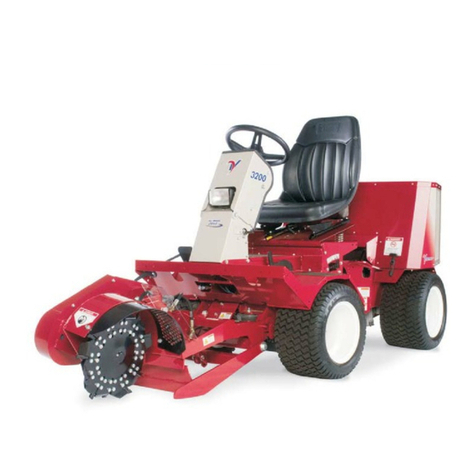
Ventrac
Ventrac LC150 Owner/operator's manual & parts list
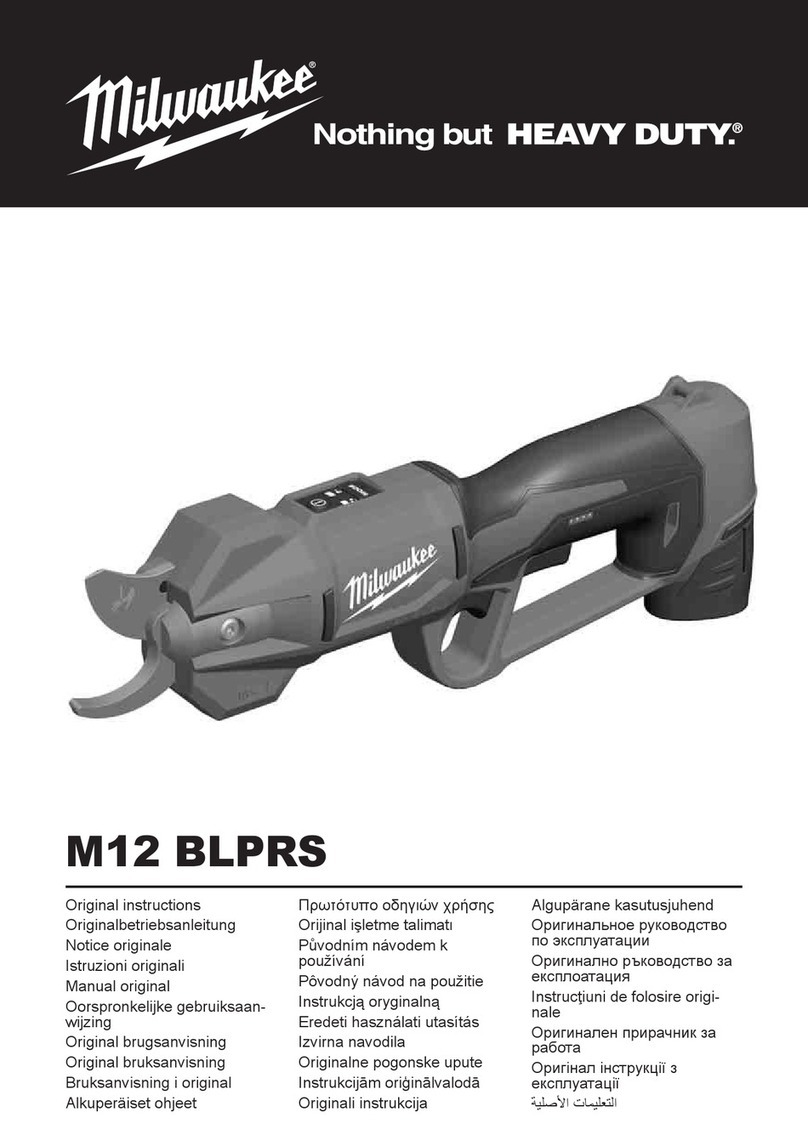
Milwaukee
Milwaukee M12 BLPRS Original instructions

New England Arbors
New England Arbors White Garden Bed with GroGrid Assembly instructions
